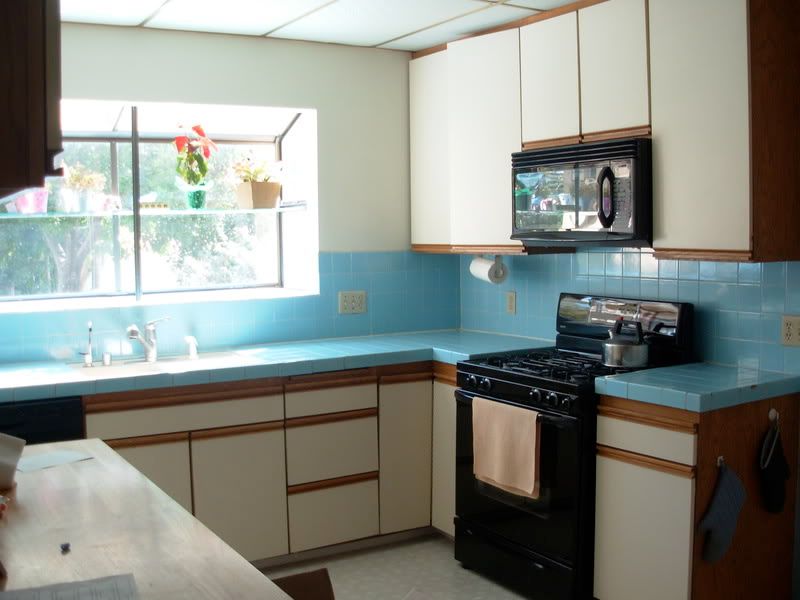In the era just past of abundant home equity, it seems that there are few kitchens remaining in our part of the world that have not been touched by the remodeler's brush (and hammer and saw). Our poor kitchen, remodeled 25 years ago, suffers by comparison to all the other kitchens prospective buyers see over and over on any given Sunday of open houses.
Our objective throughout the home-selling process was not to remodel parts of the house that could stand to have some updating, but rather rehabilitate those particular spots that could stick out in the viewer's brain as a glaring weakness. Eliminate enough glaring weaknesses, the theory goes, and we will have done just enough to leave the visitor only with memories of the good things. And we will have done so at a fraction of the cost of a remodel, without the fear that a new owner will immediately take a sledgehammer to all our expensive work because it did not meet their taste.
Our kitchen is the primary glaring weakness of the house itself. Before we put the house up for sale, we replaced the worn-out flooring with a cheap but new vinyl floor. We have never heard a complaint. That left us with the tile, the cabinets and the dropped ceiling. We won't do anything about the ceiling because that would involve electricians and permits from the City. We thought seriously about refacing, repainting or "re-dooring" our cabinets. We had someone lined up to give us an estimate this week when Cheryl figured out that tile could be recolored through a reglazing process. Our neighbors had done this, with great success. We contacted the same people, who were available to start the job that same day, for a very reasonable fee.
They offered two colors, white or almond. We had been thinking about going with an all-white kitchen, but chose almond. Through a comedy of errors, the worker initially reglazed the tile with white, which apparently looked awful in context. The benefit to us is that it confirmed that, even if almond were not great, it would have to be better than white. After two long days of work, it's done, and we could not be more pleased.
Before:

After:

It is amazing what a difference a small change can make. We hope prospective buyers feel the same way. Or, better yet, that they don't think about it at all.
2 comments:
without the fear that a new owner will immediately take a sledgehammer to all our expensive work because it did not meet their taste.
Sure it's painful to think the hundreds or thousands of dollars you spent on improvements wasn't necessary if the buyer is going to click "undo." This mental hurdle can be difficult to leap, but what the buyer may or may not do to the house should have no bearing on your remodeling choices. You're simply trying to make the house as attractive as possible.
Not quite true, in our case. The prevailing mentality around here is to remake kitchens in a particular style (it's a cultural issue), and the discount for the cost of that expensive remake is almost always factored into the discussions of price.
Also, we simply don't have the resources to throw at a major remodel, particularly because we're trying to save what we can for the new house.
Yes, it's irrational to worry about what the next owner will do from an emotional standpoint. Financially, though, we have to take it into account.
Post a Comment